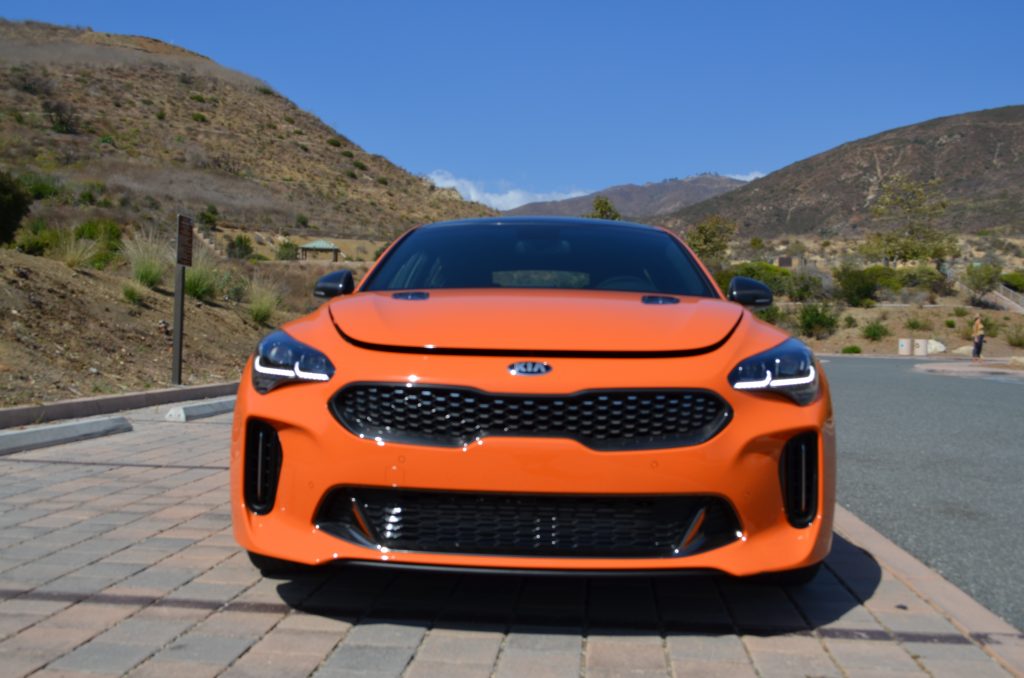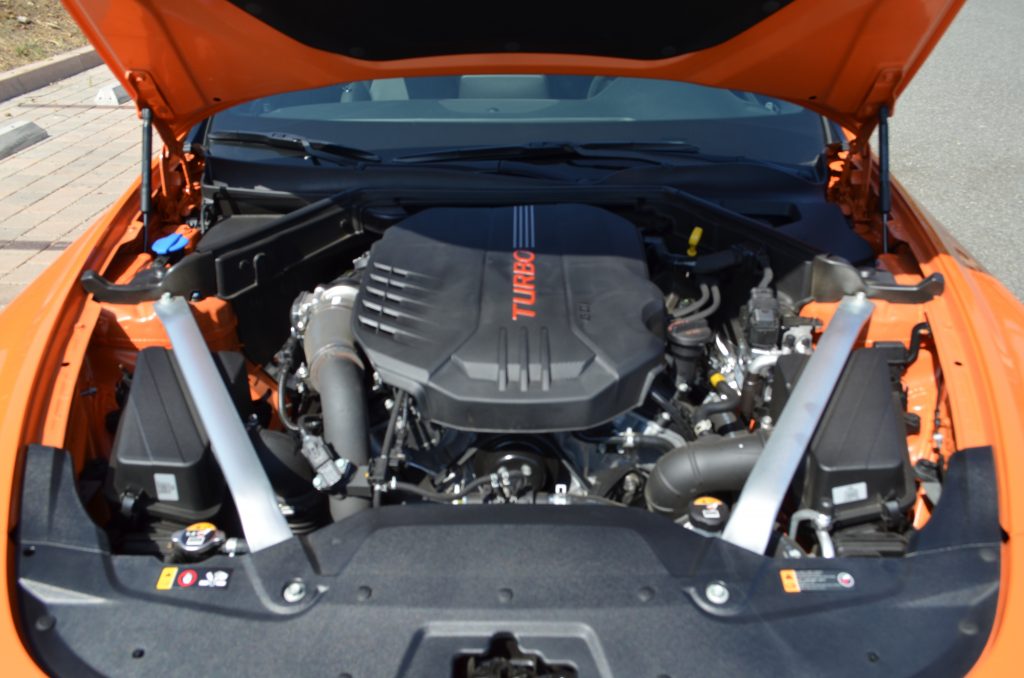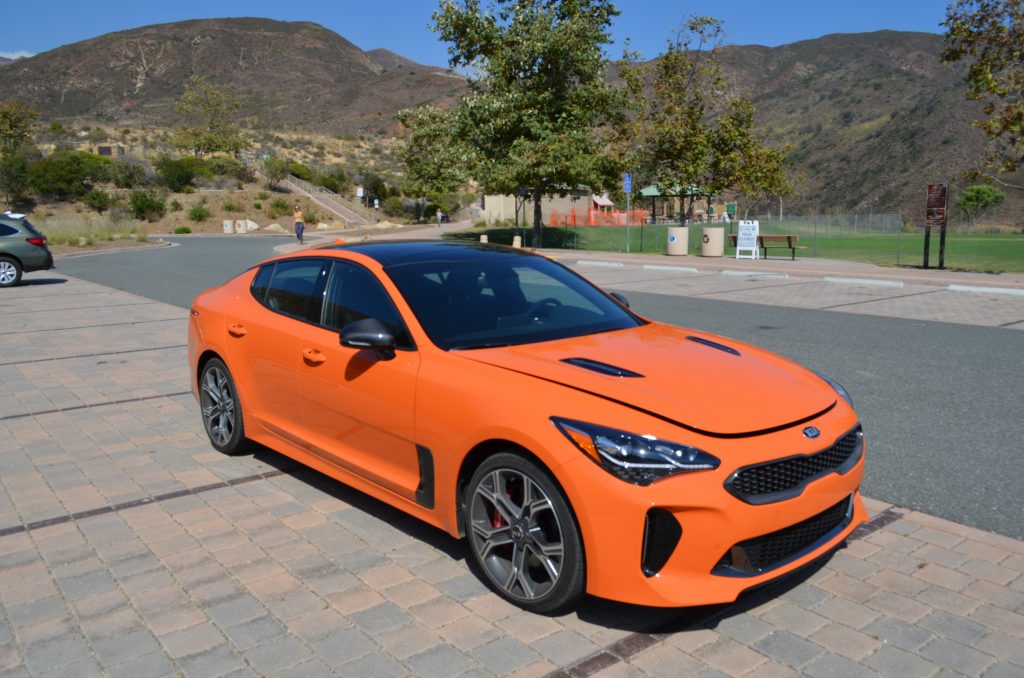Burning the Midnight Oil.
If, 25 years ago, I told you that tiny Korean upstart Kia – then an unknown newcomer in the US market – was going to build a proper, powerful, athletic sports sedan that would rival some of Germany’s most established players, you’d have looked at me like I had three heads. Just as with [future] sister company and part-owner Hyundai a decade prior, Kia’s first products were so cheap, and cheaply made, that they only made sense at cut-rate prices. Which is totally the strategy Kia adopted. Hey, you can’t get another new car at these prices!
And it got even worse. Within a few short years, the Asian Financial Crisis took its toll on South Korea, birthplace and headquarters of Kia Motors. The carmaker almost didn’t make it; it filed for bankruptcy at home. Conveniently, though, the devalued won made Kias even cheaper in the States, and so US sales continued to climb. Further, Korea Inc. wasn’t going to let Kia go down; the company was thrown a lifeline in keeping with Korea’s cheabol system of corporate ownership when Hyundai purchased a 51% stake, and in return Kia was granted partial ownership of various Hyundai entities.*
Ok, enough of this boring businessy shit right? You’re here to learn product, so let’s get to the bright (!) orange Stinger GTS tested here.
First off, know this – this thing isn’t just a pretty good first effort. No. HOW did they do this, and this well-executed, first time at bat? At a time when the American carmakers can’t sell a regular ol’ sedan profitably, and are all but basically abandoning real cars to import brands (as opposed to the lifted wagons people call “SUVs” but have basically no off-road potential and folks pretend they actually need) – how the heck did Kia pull this off? And how’d they do it at this price?! (our loaded Stinger GTS rang the register at $47,995).

Well, I’m not sure they’re making much money on Stingers. Perhaps it’s a loss leader. But it’s not an anomaly. The excellent Telluride SUV, which we’ll review in a separate post, is also a home run. Indeed, dear reader, we’re quite sure the painstaking development work, long hours and determination to nail the details has begun to reward the Korean auto brands – Hyundai, Kia and now Genesis, the fits-and-starts luxury brand that finally launched nationwide – much as they did for Toyota’s Lexus a few decades back. It saddens us that the US-based brands don’t have this much patience for proper cars (Tesla excluded). We have a feeling they may come to regret this – especially GM and Ford. At least FCA has proper cars out of its European stable of brands.
Anywho, this is the second Stinger we’ve driven, but the first we’ve had for any extended length. And I’m reminded at what a competent effort this is. Better than expected. And yes, while badge snobs may pay similar money to drive a lightly-optioned, four-cylinder 3-series, those who can look past the oval “K-I-A” on the front of this rig will be getting far more – and a far better – car for their dollar.
But you likely know some of this already. Unless you’ve been living under a rock, you’ve likely heard or read that the Stinger is a legit sports sedan. But in today’s automotive universe, frankly, there’s a lot of great product out there. As a general matter, it keeps getting better with each passing year. Even for those of us who think about cars every day, or maybe especially because of this fact, it can be easy to lose track of how good the Stinger is since it’s no longer the new, new thing. But in its GT (and very limited-run GTS) guise, this is a phenomenal mid-large hatchback sports sedan. It’ll murder an Audi A5. Which, again, is really what it competes with on price.
So what we have here is a handsome, fun-to-drive car with ample power (365 hp), poise and athletic moves. It rides well – with great moves but not a punishing ride. It’s a big rig, and you’re reminded of that when you’re on tight mountain switchbacks, but it nary puts a wheel in the wrong place. The Stingy offers ample practicality, too, with a standard “4-door coupe” hatchback profile. And in GT and, (new/limited) for 2019, GTS form, it looks and drives like serious kit. Yes, the Stinger is a big car – nearly 200 inches long – but drives smaller and lighter than it actually is. And the way the car comported itself in a series of fast mountain sweepers is perhaps its most impressive feat.


This Stinger GTS also comes standard with a sophisticated torque vectoring AWD system, and it’s complete with launch control, which is, naturally, hella fun. Due to this unit’s AWD (optional on base and GT models), don’t expect much in the way of big drama burnouts, but it handled back-to-back launches with no complaints. Kia claims this GTS model’s AWD was even set up to allow drifting, though yours truly wasn’t about to try that on a 45-min. drive through the narrow canyon passes dug into the hills of Malibu, Calif. Now, obviously the standard rear-drive Stinger GT drifts just fine too when you shut off stability control – but the GTS offers the security of AWD traction when you need it and ass-out hooligan antics when you, um, also need it.
Speaking of sporting pretense, Kia’s poaching of Albert Biermann of BMW’s M “division” engineering fame shows in spades. The Stinger rockets out of corners even when not switched into AWD Sport mode, but it’s the way the car turns in that feels most connected to the driver’s synapses. We’ve been consistent in our panning electric power steering systems, despite their weight, packaging – and therefore efficiency – advantages. Most manufacturers still haven’t quite nailed a “natural”-feeling level of feedback through these types of helms, including Kia, to be frank. But the Stinger stands as an exception (I thought the Telluride also had more natural feedback through the rim; more on that model via another post). Though perhaps not modern Porsche-level sharp, there is pretty good road surface detailing transmission and natural heft at the helm. And behind the wheel, you rarely feel like you don’t know what the contact patches are doing. All good things.
Is the Stinger GTS a hardcore sporting car? No. But that’s not the point of it. It’s meant to be a barnstormer on the weekends, and a comfortable commuter during the week. And besides, it’s damn close on the sporting car front anyhow. Beyond this, it’s just a good car, balanced for both sporting and commuting missions in the way the classic BMW M cars of the 80s and 90s always were. The Stinger’s ride is superb, even on LA’s atrociously bad pavement. In my view, it’s a bit too big and heavy a car to really feel comfortable dancing around in your hands – at least on public roads. But one could say the same thing about the past few BMW M5 generations – a car that, in size and weight at least, is comparable to the Stinger. Price, obviously, is another matter altogether. Kia will let you have two stinger GTs for the starting price of the new M5.
The Stinger’s 3.3L 365hp, 376 lb-ft. twin-turbo V6 is a very good engine, too. It’s immediately responsive, with little evident turbo lag, and the eight forward gears provide enough of a ratio spread that the engine pretty much always has something to work with. The quad exhaust pipes out back look boss and emit a pleasing snarl when you dip into the throttle. If this powertrain has an Achilles’ heel, it is Hyundai/Kia’s in-house 8-speed; you can sometimes catch it stumbling into the wrong cog or hesitating slightly between shifts. The benchmark modern automatic, ZF’s 8-speed, doesn’t suffer this problem, seemingly no matter what OEM tunes its software. Admittedly, this is nit-picking, as this is a very good transmission; it’s just not a world-beater.
Other nits? There are some. Clearly, the Kia delivers spectacular value that pretty much none of its competitors, even the Japanese nameplates, can manage. And that’s not factoring in dealers eager to move inventory, or factory incentives that may be available. If we had to guess, we’d guess that the Stinger isn’t immune from the malaise affecting all car sales in the States (vs. SUVs and pickups). Having said that, though, there is some room for improvement on the interior, as one can find a lot of hard plastics around the base of the doors, the two front seats, and the transmission tunnel. Even making these slightly softer-touch would be a noticeable improvement. The graphics in the driver’s information display also seem dated, and some of the competition offers bigger screens with higher-resolution maps. This car was engineered a few years ago, though, and electronics tech moves rapidly. The [brushed aluminum] center console and switchgear feels pretty durable and is pleasing to the eye – and that’s where most folks’ eyes will be gazing at anyhow. To boot, the standard Harmon/Kardon stereo is excellent – far superior to most manufacturers’ “premium” Bose systems.
Outside, the Stinger shows its size – and practicality. It offers far more rear legroom than its Genesis G70 platform-mate and adds even more practicality by virtue of its hatchback liftgate. I have no doubt that with the seats folded, one could fit a bicycle and a pair of golf clubs back there, no problem. And then there’s the looks: it’s a handsome car, this. And it looked especially resplendent in the bright orange paint job of our GTS tester. It wears Kia’s signature “tigershark” grill better than all their current sedans, imho. The full tinted glass canopy, red brake calipers (yes, those are Brembos up front, folks) and clever but sparing use of genuine carbon fiber trim on the rear diffuser, front air splitter and side mirror housings is tastefully done – enough to send the signal to those in the know that this is indeed a Stinger molto speciale (Korean: 매우 특별). And the red accents on the air intake add to the shark theme in a sporting and tasteful way. Overall, it’s a very impressive effort.
Act fast, cause GTS production is limited to a few hundred units.
Source: https://archive.nytimes.com/www.nytimes.com/library/financial/030398asia-us-pullback.html